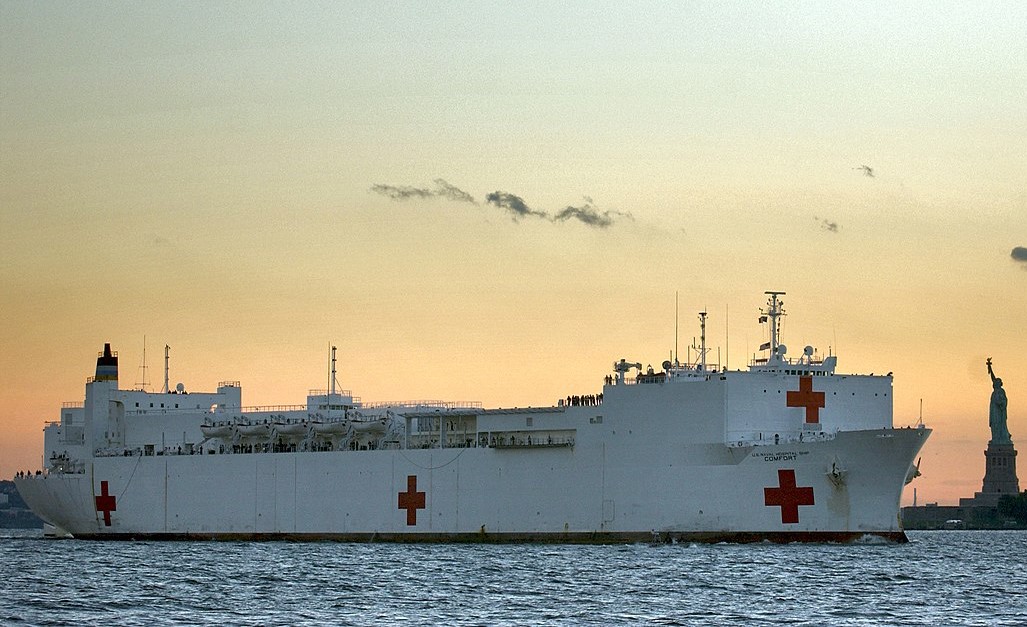Since their conversion from supertankers to hospital ships, these behemoths have gained a cult status in Navy circles. The two vessels – USNS Mercy and Comfort – have been in operation since 1986, but despite numerous armed conflicts and natural disasters across the globe, they have remained surprisingly underutilized. To further divide opinions, the US government has been deploying the Mercy-class on symbolic humanitarian missions overseas, often denounced in the media as expensive PR campaigns. The result – the usual controversy, with public sentiment polarized between admiration and condemnation. But behind all this noise, hides the story of two remarkable ships.
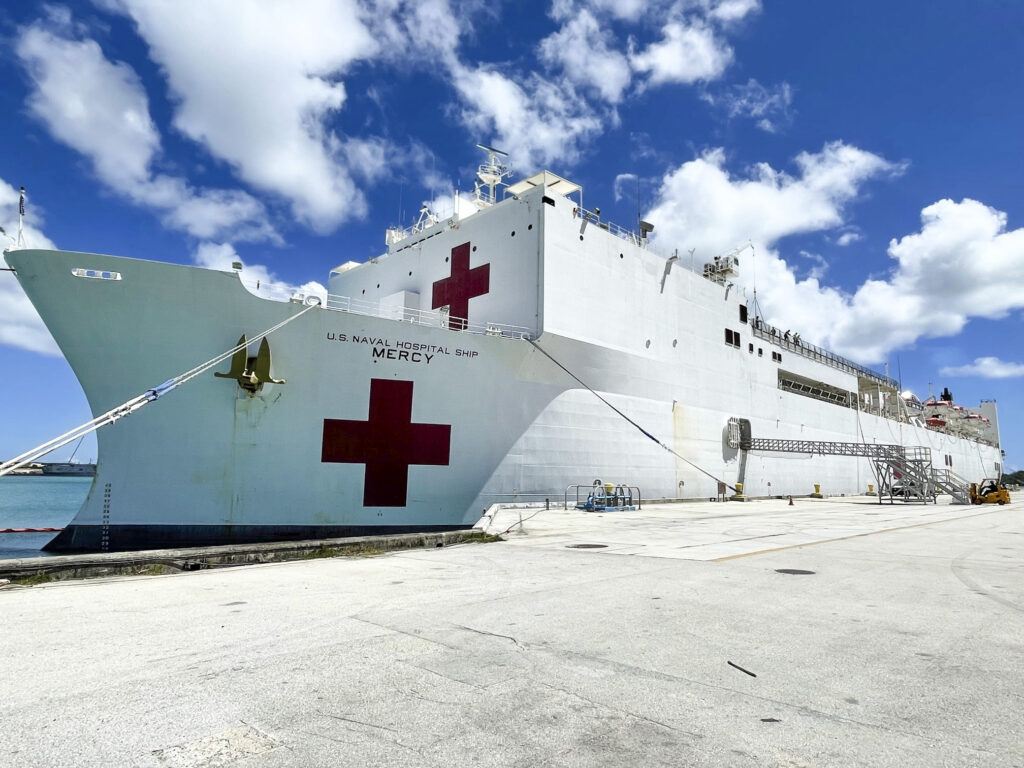
Origins: A Cold War Heating Up
The lifeline of the Mercy-class began more than a decade before its birth. The 1960s saw a soaring demand for energy, leading up to the dawn of the supertanker. Designed to carry vast amounts of oil from the Persian Gulf to industrial powerhouses like the USA and Japan, these vessels got so popular that many shipyards had to decline orders. In 1973, though, all this hype crashed to the ground, when the Arab oil embargo left much of the world’s supertanker-fleet unemployed. This was how two redundant San Clemente-class vessels were selected by the US Navy to start a new life.
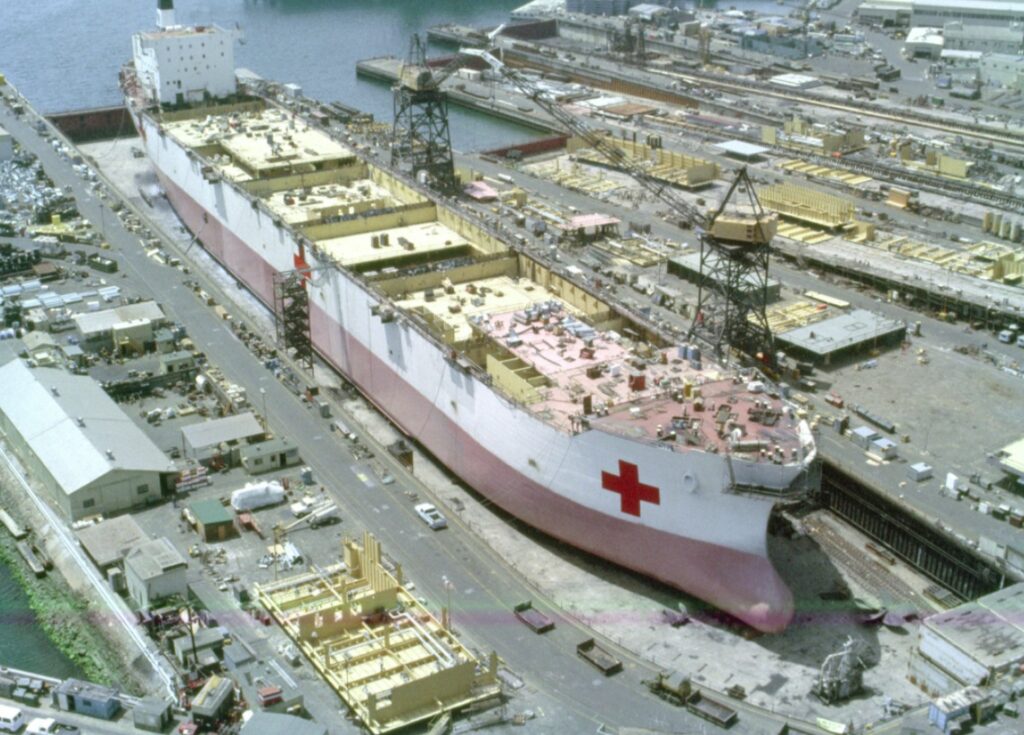
Back in the early 1980s, the concept of high-capacity hospital-ships was not as odd as people see it today. After all, not only was the memory of Korea and Vietnam still fresh, but the turmoil from the Iranian Revolution and the Soviet invasion of Afghanistan only got worse in the years that followed. Add to this the historic peak in Soviet nuclear stockpiles in 1986, and the commissioning of the giant USNS Mercy in the same year no longer seemed like an extravagance. The Comfort followed a year later, but the dissolution of the USSR in 1991 eased global military tensions for a while. The looming all-out war never came about.
World-Class Medicine on the Water
Most healthcare systems in the world would envy the impressive facilities on the Mercy and the Comfort. With a length of nearly 900 ft (273 m), each ship has 12 operating rooms, while 88 of the 1,000 beds are in intensive care. Additional medical facilities include an optical clinic, dentist’s offices, radiography, angiography, two oxygen plants, a fully equipped laboratory, and a well-stocked pharmacy. In addition, the trauma facilities are self-sustainable for up to a month, making the system highly independent at sea.
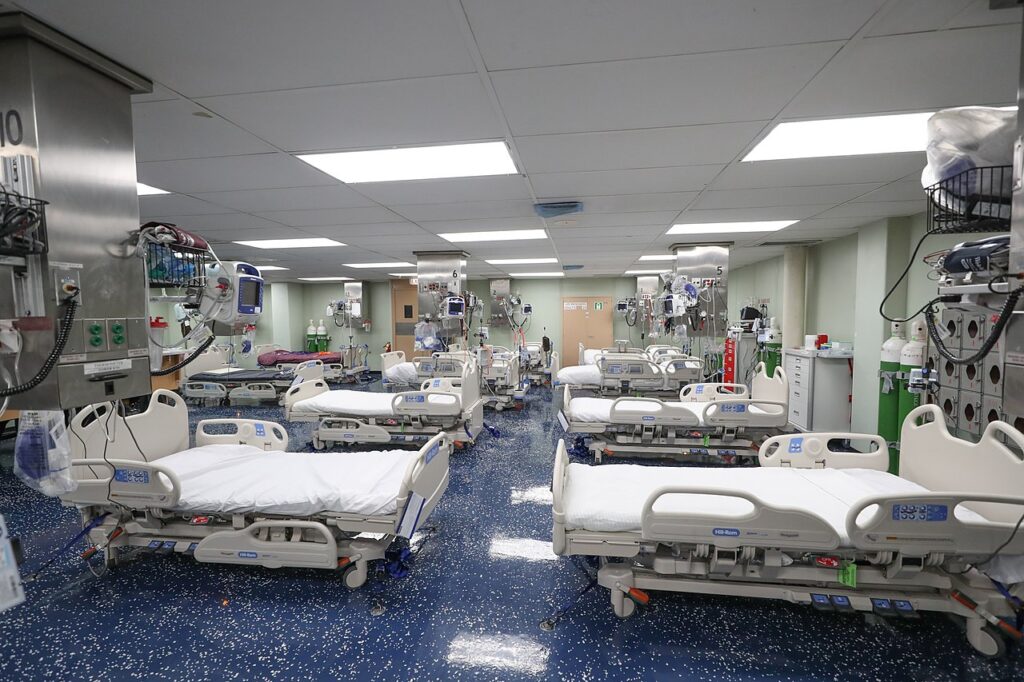
Casualties can be received at 50 stations, with patients boarding from a pier, by boat, or by helicopter. For the latter purpose, the vessels each have a helipad for one chopper (such as a Black Hawk or a Seahawk), plus enough shelter for two more. And of course, all of this is run by a fitting number of people – 61 civilian and 1,214 military staff, when fully operational.
Slow Steaming
Size, unfortunately, also comes with a few deficiencies. The propulsion system on each ship uses two General Electric turbines with Foster Wheeler steam boilers and a single shaft. A power train like this supplies 18.2 MW with maximum cruising speed at just 17.5 knots, reducing the vessels’ responsiveness at longer distances. Combined with a massive radar signature, this low speed also makes them easy targets.
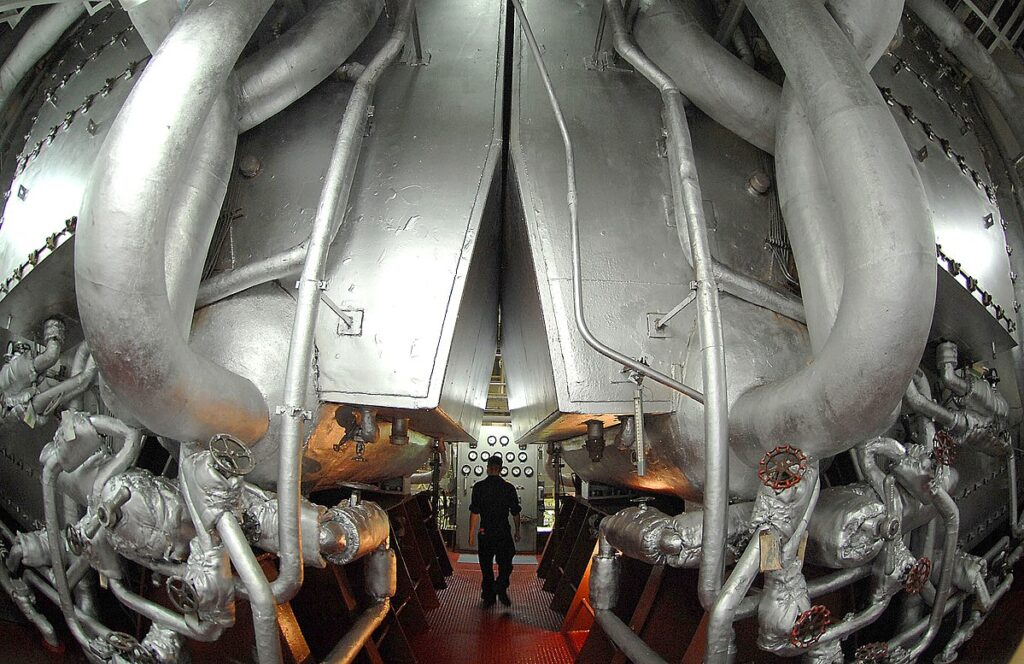
Another weakness is the restricted movement within the ships. As reconstructed oil tankers, the Mercy-class have enormous bulkheads, but without any passages to go through them, moving patients along the length of the ship requires several elevator rides. In the bedlam of a combat theater, this adds another obstacle to an already complicated environment.
But the one technical flaw that gets the most criticism is patient-embarkation at sea. Operational history shows that, despite being stable enough for advanced surgery, the Mercy-class are unreliable for ship-to-ship boarding in rough seas. This leaves air as the only viable option in adverse weather conditions, but with only one helipad per ship, the process is slow and inefficient.
Propeller Propaganda
Regardless of technical advantages and shortcomings, naval experts point out that the biggest problem with the Mercy-class is their capacity, excessive for most contemporary combat-scenarios. Since her launching in 1986, Mercy has only participated in one military campaign – the 1990-91 Gulf War after the Iraqi invasion of Kuwait. And while Comfort also took part in the 2002-03 Iraq War, the two vessels have been more useful in the aftermath of several natural disasters.
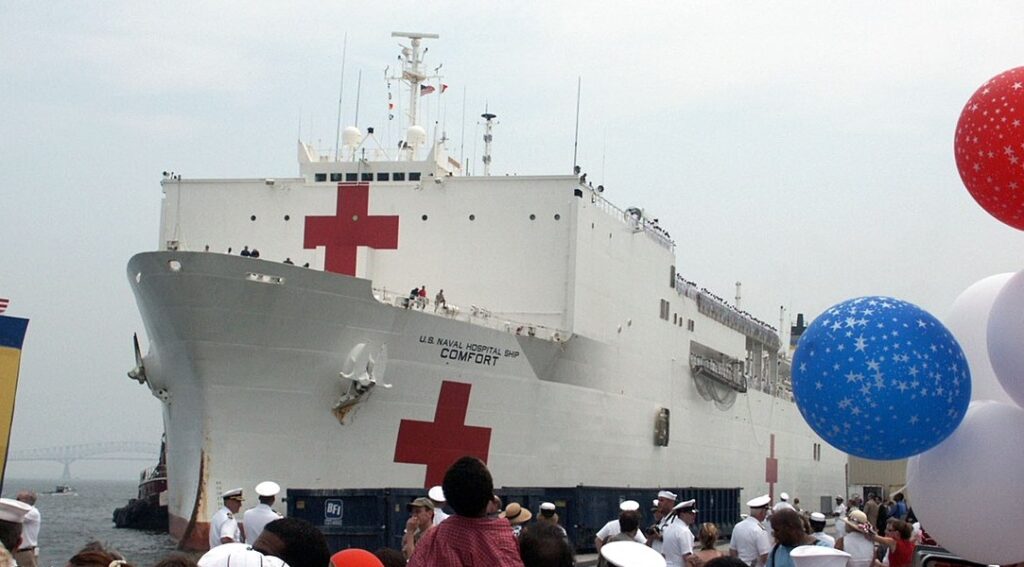
With her primary focus in the Pacific and Indian Oceans, Mercy was mobilized for the humanitarian missions after the devastating 2004 tsunami in Southeast Asia, as well the relief effort following the 2013 typhoon Hayan in the Philippines. Comfort, on the other hand, has been more active at the home front and in the Caribbean, participating in relief operations after 9/11, Hurricane Katrina, the 2010 Haiti earthquake, and the 2017 Hurricane Maria in Puerto Rico.
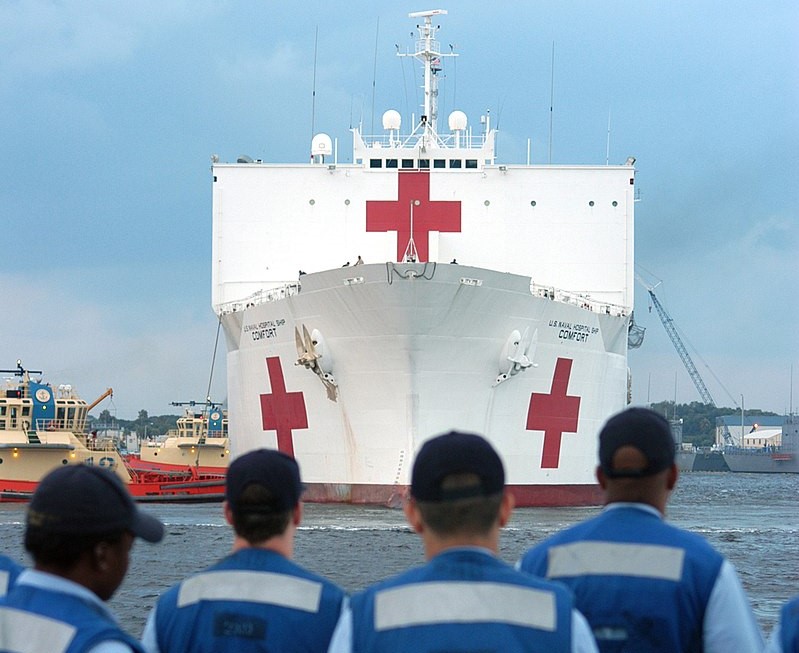
But perhaps the hottest point of contention (both in Navy and political circles) is the Mercy-class’s deployment on costly symbolic initiatives, such as the Pacific Partnership and Partnership for the Americas. These involve medical aid to friendly developing nations in the Pacific and the Caribbean, where access to modern healthcare is often limited. Political and military analysts label these operations as conspicuous publicity campaigns in what the USA considers its sphere of influence. Whatever the motivation may be, such initiatives only highlight the underutilization of two expensive naval assets.
The Unclear Future of Medicine at Sea
Despite the heated debates surrounding Mercy and Comfort, critics are less vocal about what technology should replace them. The concept of medicine at sea is as complicated as war itself, and no one can predict how armed conflict will evolve in the future. One popular idea is to replace hospital-ships with amphibious sea-ambulances, which can evacuate casualties fast and with minimal hazard to both crew and the wounded. The focus of these vessels is on swift response, deeper reach into the combat zone, and lower costs. Limiting factors, though, will be the capacity and scope of medical treatments on board.
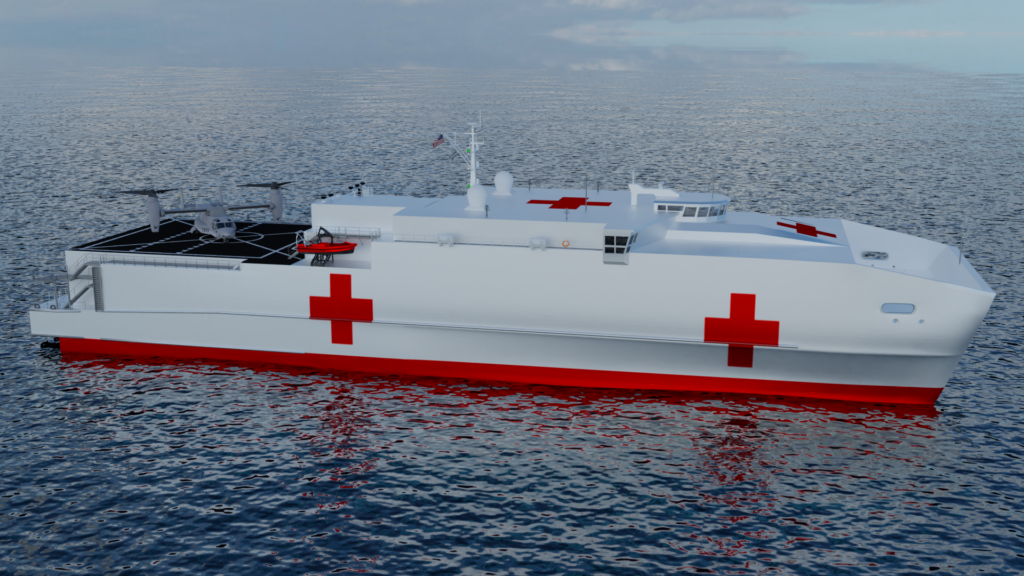
But whatever concepts the Navy may consider in the future, the substantial cost of retiring the Mercy-class and launching its successors means that these fascinating white leviathans will be around for a few more years.
Want another hospital ship story? Click here to read about Titanic’s sister ship – the HMHS Britannic!
See you next week!
The Shipyard

